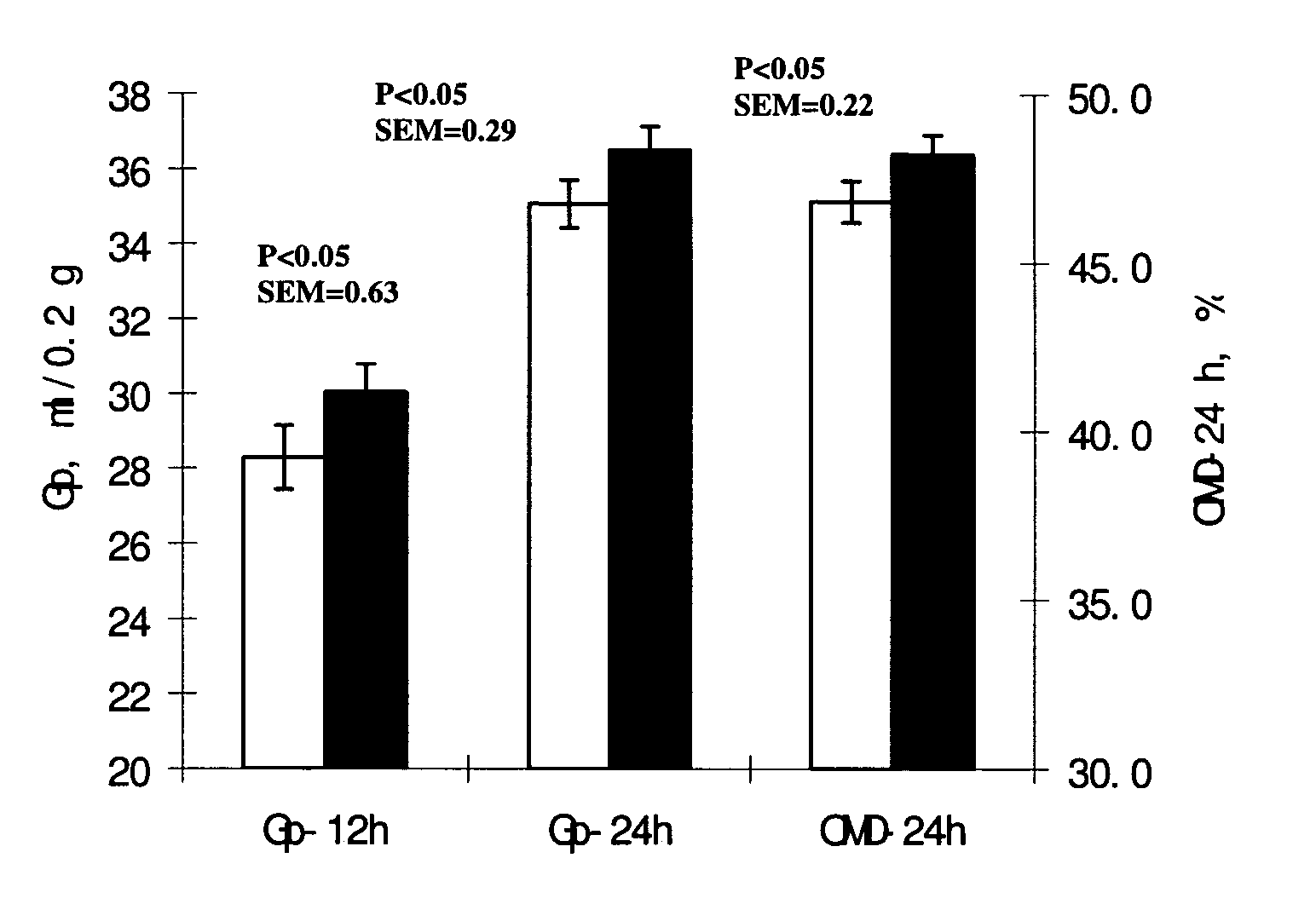Enzyme Product for Ruminants
a technology for enzymes and ruminants, applied in the field of ruminant nutrition, can solve the problems of low quality forage, low efficiency of converting forages to productivity, and animals that cannot achieve optimal productivity, so as to improve gas production, increase digestibility of fiber, and improve the effect of gp-24 h
- Summary
- Abstract
- Description
- Claims
- Application Information
AI Technical Summary
Benefits of technology
Problems solved by technology
Method used
Image
Examples
example 1
Effect on Alfalfa-Based Forage
[0095]The enzyme product KAC023-005 representing a preferred embodiment of this invention was mixed with alfalfa substrate in a dosage of 1000 g / ton. Two-hundred milligrams (200 mg) of the mixture was incubated in 100 ml syringe with 30 ml of rumen fluid which was treated with anaerobic buffer / mineral solution. Two runs of incubation were carried out, with triplicate in each run. The gas production was recorded at 12 and 24 h. Organic matter digestibility at 24 h (OMD24 h) of substrate was calculated from gas production 24 h. The results are shown in FIG. 1. Usage of enzyme in the dosage of 1000 g / T leaded to a 3.2% increase in OMD-24 h of alfalfa.
example 2
Effect on Chinese Wildrye-Based Forage
[0096]KAC023-005 was mixed with Chinese wildrye substrate in a dosage of 1000 g / ton. Two-hundred milligrams (200 mg) of the mixture was incubated in a 100 ml syringe with 30 ml of rumen fluid which was treated with anaerobic buffer / mineral solution. Two runs of incubation were carried out, with triplicate in each run. The gas production was recorded at 12 and 24 h. The results are shown in FIG. 2. Supplement of enzyme enhanced the Gp-24 h and OMD-24 h of Chinese wildrye significantly by 10.9% and 7.6% respectively (p<0.01).
example 3
Effect on Corn Silage-Based Forage
[0097]Enzyme product KAC023-005 was mixed with corn silage-based substrate in a dosage of 1000 g / ton. Two-hundred milligrams (200 mg) of the mixture was incubated in a 100 ml syringe with 30 ml of rumen fluid which was treated with anaerobic buffer / mineral solution. Two runs of incubation were carried out, with triplicate in each run. The gas production was recorded at 12 and 24 h. The results are shown in FIG. 3. Gp-24 h and OMD-24 h of whole corn silage increased significantly (p<0.01) by 16.2% and 12.1%, respectively.
PUM
 Login to View More
Login to View More Abstract
Description
Claims
Application Information
 Login to View More
Login to View More - R&D
- Intellectual Property
- Life Sciences
- Materials
- Tech Scout
- Unparalleled Data Quality
- Higher Quality Content
- 60% Fewer Hallucinations
Browse by: Latest US Patents, China's latest patents, Technical Efficacy Thesaurus, Application Domain, Technology Topic, Popular Technical Reports.
© 2025 PatSnap. All rights reserved.Legal|Privacy policy|Modern Slavery Act Transparency Statement|Sitemap|About US| Contact US: help@patsnap.com



